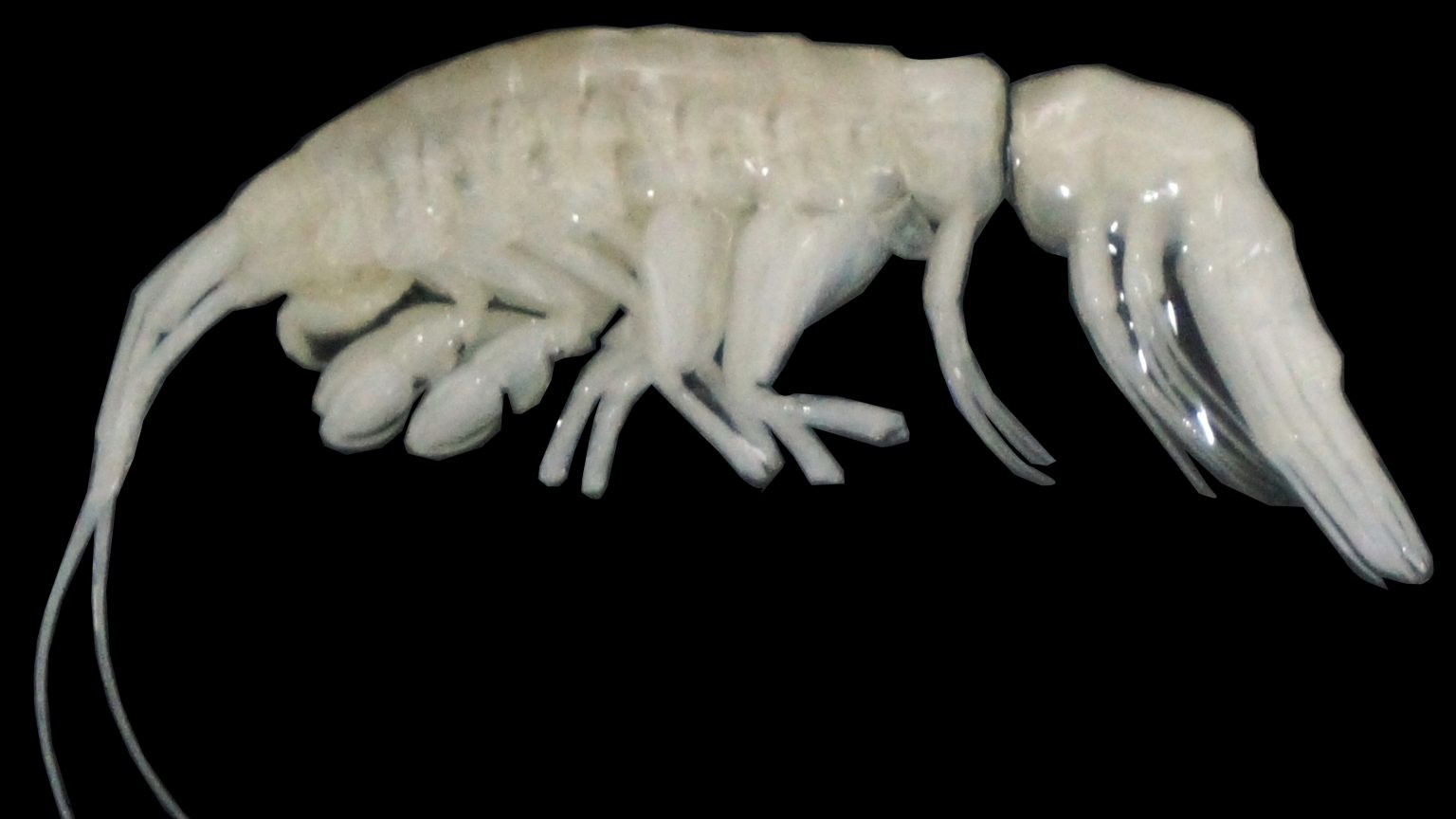Discovery of a New Predator Crustacean Species in the Depths of the Pacific Ocean
Woods Hole, Mass. (December 9, 2024) - The depths of the ocean, characterized by darkness and extreme pressure, seem like an uninhabitable environment, yet they host a surprising variety of unique organisms. Each new discovery in these hadal depths sheds light on the adaptation mechanisms of life in extreme conditions, providing valuable insights into species evolution.
A study published in Systematics and Biodiversity recently described a new crustacean species: Dulcibella camanchaca. This amphipod represents the first large active predator discovered at such depths. The species was identified by scientists from the Woods Hole Oceanographic Institution (WHOI) and the Instituto Milenio de Oceanografía (IMO) at the Universidad de Concepción, Chile.
"Dulcibella camanchaca is a fast predator, whose name derives from the word 'darkness' in the languages of the Andean peoples, referring to the deep-sea environment where it lives and hunts," explained study co-author Dr. Johanna Weston, a hadal ecologist at WHOI.
A Unique Predator in the Depths of the Atacama Trench
At nearly 4 centimeters long, this crustacean uses specialized raptorial appendages to capture and feed on smaller amphipod species in the Atacama Trench, a region characterized by limited food availability. This oceanic trench stretches along the eastern South Pacific Ocean, plunging beyond 8,000 meters off the coast of northern Chile. Its unique location, beneath nutrient-rich surface waters but geographically isolated from other hadal trenches, has led to the formation of a distinctive endemic species community.
"The most exciting aspect of our discovery is that DNA and morphology data indicate this species belongs to a new genus, emphasizing the Atacama Trench as a true hotspot of endemic biodiversity," Weston added.
A Discovery Resulting from Scientific Collaboration
This remarkable finding is the result of the Integrated Deep-Ocean Observing System (IDOOS) 2023 Expedition, conducted aboard the R/V Abate Molina and led by IMO scientists. Four specimens of Dulcibella camanchaca were collected at a depth of 7,902 meters using a lander vehicle, an autonomous platform equipped with scientific instruments and baited traps to capture deep-sea organisms. Once recovered, the amphipods were frozen and underwent morphological and genetic analysis at the Universidad de Concepción.
"This study is a perfect example of scientific collaboration and an integrated research approach. The discovery of Dulcibella camanchaca highlights the importance of continuing to explore the Atacama Trench and its hidden wonders," said Dr. Carolina González from IMO, co-author of the research and responsible for sample collection and DNA analysis. "We expect many more discoveries as we continue to investigate this extraordinary environment."
The Future of Hadal Exploration
Advancements in exploration technologies are opening new possibilities for studying the deep ocean. Each new species discovery provides valuable information on evolutionary pressures and the unique adaptations required to survive in hadal ecosystems. The results of this study will contribute to global efforts to understand and protect deep-sea ecosystems, currently threatened by pollution and climate change.
Learn More
Woods Hole Oceanographic Institution (WHOI): www.whoi.edu
Instituto Milenio de Oceanografía (IMO): https://www.imo-chile.com
Integrated Deep-Ocean Observing System (IDOOS): https://pogo-ocean.org/news/chile-completes-the-installation-of-its-first-integrated-deep-ocean-observing-system/
Source Cover credited (Johanna Weston, ©Woods Hole Oceanographic Institution)








Leave a Comment